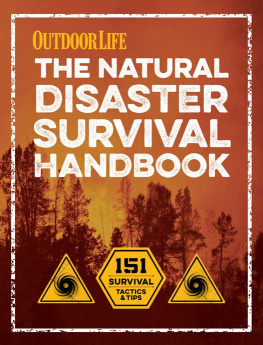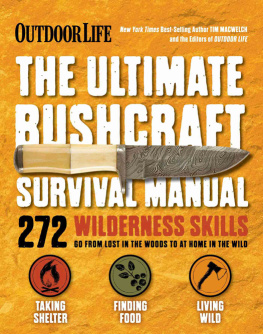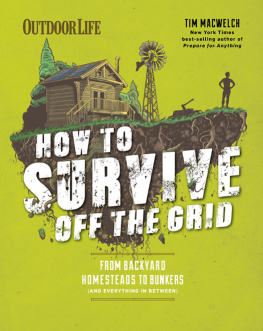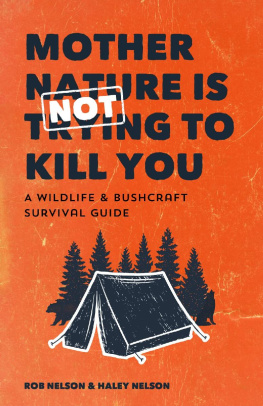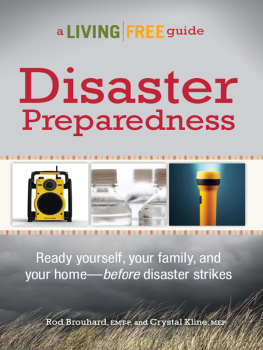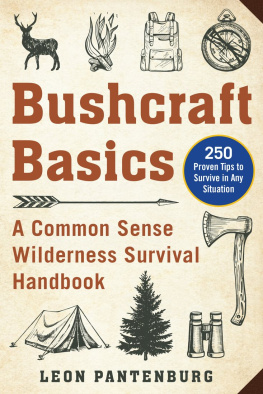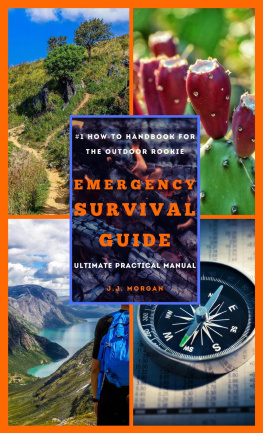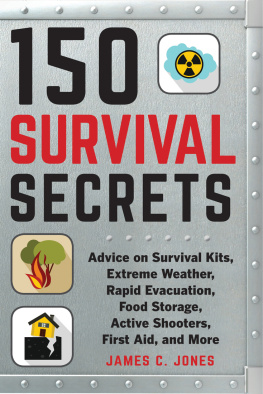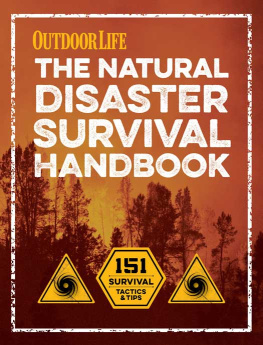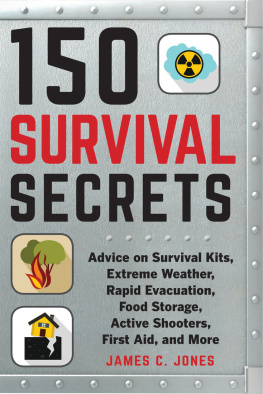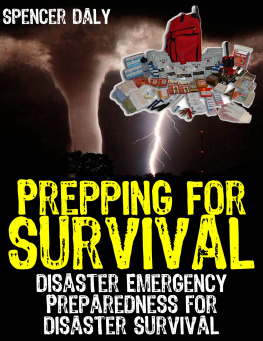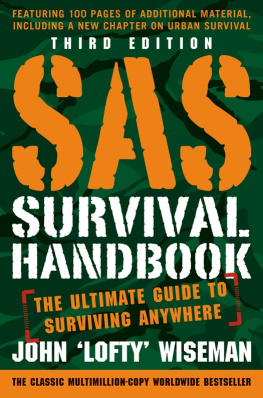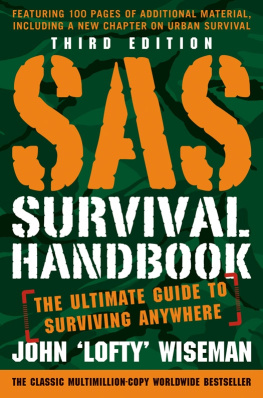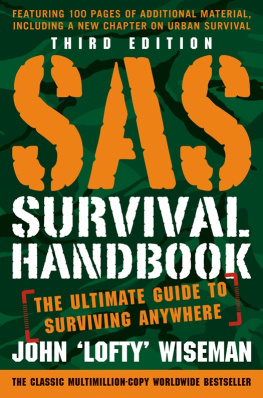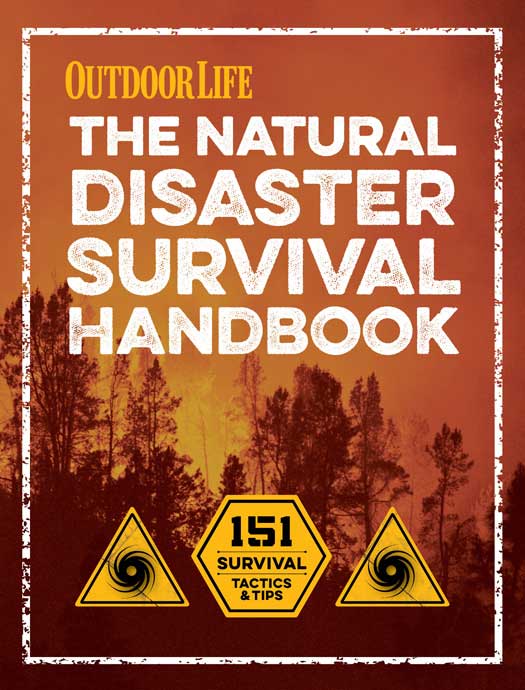OUTDOOR LIFE
THE NATURAL DISASTER SURVIVAL HANDBOOK

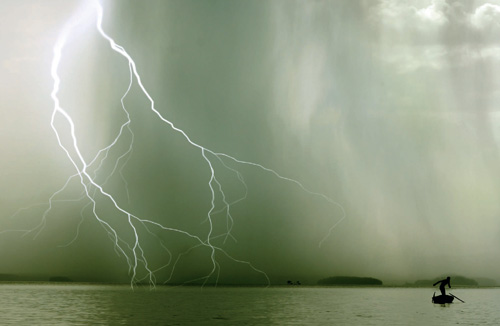

DISASTERS ARE GREAT EQUALIZERS.
They strike the rich and the poor, the sick and the healthy, the young and the old alike. But those who are wise enough to prepare or clever enough to adapt to whatever comes their waybe it blizzards and ice, hurricanes and tornadoes, earthquakes or volcanic eruptions, or heat waves and raging wildfireswill survive and thrive. You know these people: Theyre the ones with a stockpile of water and nonperishable food and a battery-powered radio in their homes and an ICE (in case of emergency) card in their wallets. This book is your ticket to join these resilient ranksto leave and breathe easier each day knowing you can handle almost any situation life throws at you. Theres no time like the present to be prepared for the future.
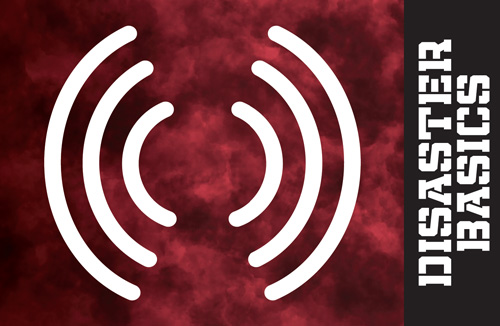

ARE YOU PREPARED FOR THE WORST?
Natural disasters may feel like they belong in the realm of Hollywood movies or like something that seems to happen to someone else. After all, it can be uncomfortable to think about circumstances where things might be out of your control and the outcome is uncertain. But the fact is emergency situations can happen to anyone. This book isnt intended to scare you with worst-case scenarios. Its intended for everyday people who want to be more informed and prepared, no matter what life brings. Your willingness to increase your awareness, take steps to plan ahead, and accept that life sometimes means handling tough situations with as much calm determination you can manifest will help you be resilient and prevail.
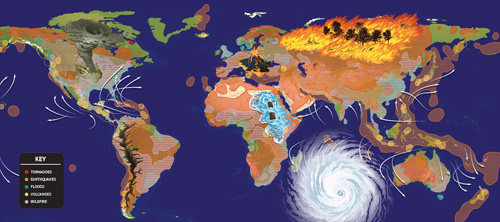
AVOID A WORLD OF TROUBLE
This map shows where in the world some of the most common natural disasters occur.
VOLCANOES Activity occurs largely around the Ring of Fire, the Pacific region that includes Hawaii and Japan. A second active area extends from Java all the way through the Himalayas and the Mediterranean.
EARTHQUAKES Most commonly occurring along the edge of the earths tectonic platessublayers of the earth that float and movequakes also can be caused by volcanic activity, landslides, mining, fracking, and drilling.
HURRICANES Also known as cyclones or typhoons, these storms range widely as they are propelled by massively powerful winds.
FLOODS While flooding can be caused by a number of factors, including dams failing or dikes being breached, in the natural world, flooding follows seasonal snowmelt and storms, and they can occur anywhere rain falls heavily.
WILDFIRES Not only triggered by lightning or human error, wildfires are becoming more common around the world as the climate changes and more frequent periods of drought and dry seasons increase fire risk.
TORNADOES Tornadoes happen when the right confluence of thunderstorms and complex air patterns come together. They devastate the central and southern United States and are common in Europe and Australia as well.

CHART YOUR PRIORITIES
Knowing how to prioritize for a given disaster is important so you dont end up focusing on the wrong thing and wasting what time you may have to prepare for your own safety. Start with the first priority and work down the list. Circumstances may change quickly; be prepared to adapt to changing conditions.
TSUNAMI
PRIORITY 1
If imminent, get to high ground immediately.
PRIORITY 2
Check Internet, weather radio, or broadcast media for news in your area.
PRIORITY 3
Prepare to evacuate; gather supplies and go bags.
PRIORITY 4
Secure your home; move valuable items to the highest floor.
PRIORITY 5
Shut off utilities.
EARTHQUAKE
PRIORITY 1
Get to a safe place: Drop, cover, and hold on!
PRIORITY 2
Stay there until its safe, or leave if its too dangerous to stay.
PRIORITY 3
Shut off utilities after the quake.
PRIORITY 4
Seek shelter if your home is no longer safe.
PRIORITY 5
Inventory supplies.
FLOODING
PRIORITY 1
Check Internet, weather radio, or broadcast media for news in your area.
PRIORITY 2
Prepare to evacuate; gather supplies and go bags.
PRIORITY 3
Learn the safe evacuation route if needed.
PRIORITY 4
Secure and sandbag your home.
PRIORITY 5
Consider proactively evacuating.
TORNADO
PRIORITY 1
Check Internet, weather radio, or broadcast media for news in your area.
PRIORITY 2
Seek cover in a shelter or an interior windowless room.
PRIORITY 3
Await the all-clear signal via siren, Internet, or news.
PRIORITY 4
Assess if your area is still at risk.
PRIORITY 5
Evacuate to another shelter if yours is no longer sound.
HURRICANE
PRIORITY 1
Check Internet, weather radio, or broadcast media for news in your area.
PRIORITY 2
If time allows, board up windows; sandbag and secure your home.
PRIORITY 3
Gather supplies and go bags.
PRIORITY 4
Decide whether to shelter in place or evacuate.
PRIORITY 5
If evacuating, shut off utilities before leaving.
VOLCANO
PRIORITY 1
Check Internet, weather radio, or broadcast media for news in your area.
PRIORITY 2
Decide whether to shelter in place or evacuate.
PRIORITY 3
Gather supplies and go bags.
PRIORITY 4
Wear goggles and dust masks to protect your eyes and airway.
PRIORITY 5
Seal doors, windows, and ducts against ash; turn off fans and air conditioners.
WILDFIRES
PRIORITY 1
Check Internet, weather radio, or broadcast media for news in your area.
PRIORITY 2
Fill up the gas tank in the vehicle intended for evacuation.
PRIORITY 3
Gather supplies and go bags.
PRIORITY 4
Shut off gas main; turn off propane tanks.
PRIORITY 5
Consider proactively evacuating.
POWER FAILURE
PRIORITY 1
Check Internet, weather radio, or broadcast media for news in your area.
PRIORITY 2
Activate solar chargers or prepare portable emergency generators.
PRIORITY 3
Gather supplies and go bags.
PRIORITY 4
Inventory supplies.
PRIORITY 5
Ration battery-powered devices to maximize operational life.
CREATE YOUR FAMILY EMERGENCY PLAN
In the event of an emergency, a well-thought-outand often-drilledfamily emergency plan can eliminate stress, limit confusion, and save a great deal of wasted time. Instead of wondering what to do or when to do it, you can put your emergency plan to work right away, bringing sanity, calm and safety to dangerous situations.

